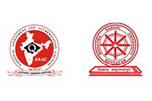Scholastic Competency Development Program
Objective of the practice
- Bridge knowledge gaps in the curriculum
- Mold the students to meet the needs of the industry
- Develop additional skills sets and thus improve employability
- Expose students to the curriculum of other institutions
- Enable students to gain additional qualification apart from their regular program
- Adapt students to new methods of learning such as e-learning
- Attain strategic plan goals
The global education sector is witnessing a massive revolution with the advent of MOOC courses. People around the world are using MOOC courses for improving job prospects, career advancement, skill development, multidisciplinary learning, lifelong learning etc. As these courses dissolve barriers such as geography, time and space, they have become much liked by all irrespective of age, gender, class and creed. The Government has also made it their mission to promote such courses through initiatives such as the NMEICT and through the establishment of MOOC platforms such as Swayam, NPTEL etc.
The management and the faculty of the college has made conscious efforts to equip students to meet the requirements of industry and bridge the gap in the curriculum by providing value added courses every semester. This enables our students to have an edge by gaining knowledge beyond the curriculum, achieve better skill sets and attain better job prospects.
The Practice
VAC
All the students are provided with value added courses every semester. The add on courses for each semester is carefully decided based on the feedback received from alumni, industry experts and academicians. Suitable add on courses are explored in order to fill the gaps in the curriculum. Once the area is finalized, the Head of the Department forwards the recommendation to the Principal. This is discussed in the staff council meeting and then forwarded to the management for approval. Upon receiving the approval, the syllabus is framed by concerned faculty and add on coordinator. If necessary, an external agency is approached for the rendering of the course. In such cases, an agreement/MoU is made between the external agency and the college regarding the course delivery, number of hours to be engaged, evaluation and assessment methods etc. In order to ensure that quality of the courses, periodic assessments are conducted and the performance of the students are evaluated.
MOOC
The institution encourages students to explore and imbibe knowledge outside the curriculum. Along with the add on courses, faculty encourage students to take up MOOC courses from various reputed course providers. During the pandemic period, all the faculty and students of our institution effectively utilized the time to complete multiple courses from various national/ international Universities. The institution was able to avail an offer from Coursera during this period when they offered various courses free of cost to the faculty and students of our institution. This resulted in students gaining additional certifications along with their regular courses. The class teachers, mentors and the head of the departments ensure that the students register and complete such courses on a regular basis. At present, the students and faculty of the institution are doing courses from Coursera, Edex, Google, Swayam, NPTEL etc. The faculty of the college are also encouraged to do such courses and it is one of the components of the faculty appraisal system.
Evidence of success
Students who have undertaken MOOC and add-on courses have largely benefitted from the same. Upon successful completion of the course, they receive an additional qualification. This aids them in securing admissions in reputable institutions in India and abroad. They also receive an edge over their counterparts in job interviews. The MOOC and VAC courses also helps the students to be updated in the respective areas of specializations. Students also venture beyond their curriculum and explore other genre which encourages multi-disciplinary learning. Completing MOOC courses via the online platform have exposed the students and faculty to varied pedagogical methods thus making them adaptable in their learning experiences. It also provides exposure to the students to global pedagogies apart from the regular approaches adopted in the prescribed curriculum.
Problems encountered and resources required
- Identifying apt courses for each batch according to the alternating demands of the job industry
- Allotting slots for add-on courses in the regular timetable without hindering the ongoing classes
- Motivating students to dedicate time to acquire additional qualifications along with their regular course
- Uncertainty in the University examinations sometimes hinders the smooth progress of the courses
- MOOC courses are sometimes expensive and thus discourages students from registering for these courses
- Identifying quality external resource persons for delivering VAC courses.


















